Art World
‘Art Is Where the Money Is’: Asprey Chairman John Rigas on Why He’s Aligning His Luxury Brand With the Art World Now More Than Ever
Rigas sat down with Artnet News to discuss his new exhibition series with Swiss art dealer Simon de Pury.
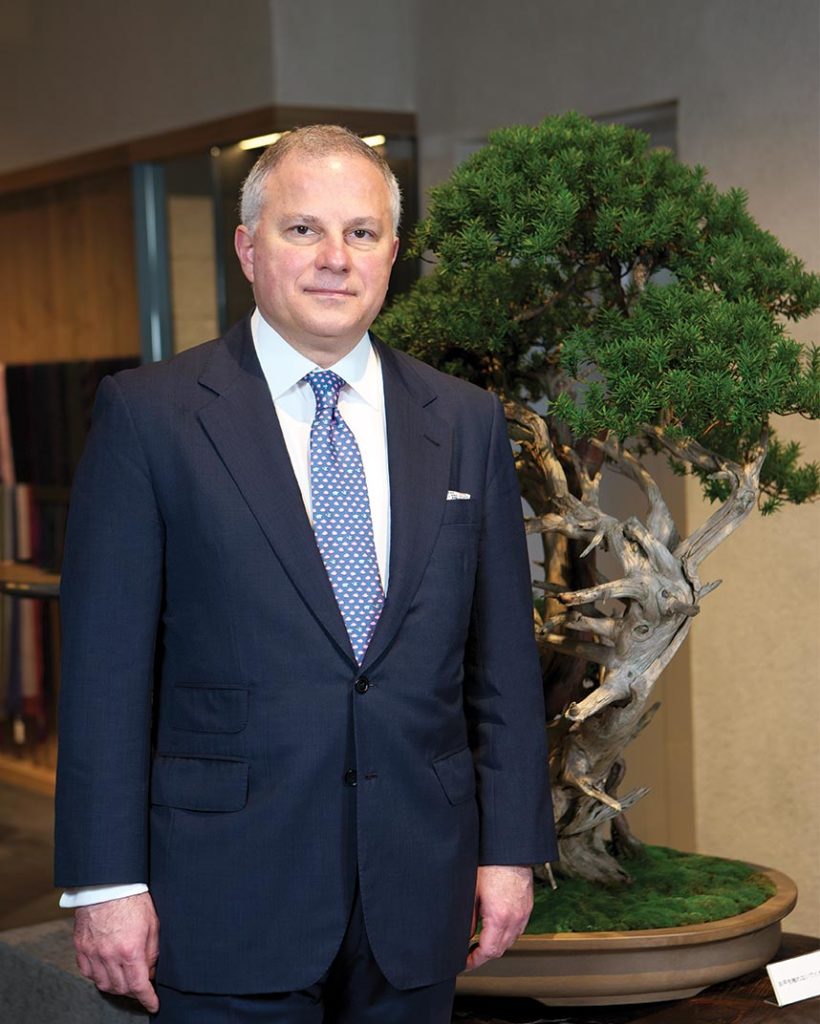
Rigas sat down with Artnet News to discuss his new exhibition series with Swiss art dealer Simon de Pury.

Noor Brara

When Asprey’s chairman, John Rigas, took the reigns at the British luxury-goods house in 2006, he joined in part because of his passion for art.
A longtime art admirer and collector with a particular penchant for Impressionist paintings and long, solo strolls through the galleries at Tate Modern, Rigas saw an opportunity to enhance Asprey’s global network of artisans and amplify their creative ambition. To do this, he began to work closely with them, investing in their skillsets and encouraging them to create unique, handmade products that sit at the intersection of art and luxurious design.
Over the years, Rigas has successfully rebranded the historic house for the modern customer—in part by always keeping art at the core of his brand ethos.
While in New York last week, Rigas sat down with Artnet News to discuss Asprey’s newly launched exhibition series, co-produced by the legendary auctioneer and dealer Simon de Pury; the creation behind some of the brand’s most art-inspired products, from hand-blown glass objets d’art to jeweled boxes made in Afghanistan; and his thoughts on why so many luxury houses are increasingly turning to artists for collaborations and injections of new ideas.
My interest in art started with my cultural education. At university, I studied literature and theater, which are different from the fine arts but are still part of the same cultural production that exists for every age. I think—and this is true of all art forms—that art is a visceral telling of what’s happening during a particular historical period. That’s very interesting to me, and is what informs my general interest in fine art.
As for how the subject of art relates to Asprey, we are obviously a luxury house—and what is luxury, when you break it down? From our standpoint, it is innovation, quality, and refinement, and all those elements are featured in our products. When the mission of a brand is to deliver experiences at a connoisseur level, then you’re really talking about working with the best materials and the best craftsmen, who have tremendous focus on what they’re doing and are always pushing to go above and beyond in terms of innovation and creativity. That’s not dissimilar from what every artist tries to do, which is to peer deeply into their soul to capture an understanding, expression, or emotion that surpasses what others have done.
It’s true that artists look inside primarily so they can freely discover and tap into some emotional dimension that is new, while artisans are given direction and are tasked with essentially fashioning a commercial object. But many of the artisans who work for Asprey are actually artists who have their own projects going on, and their craftsmanship, and the way they control their metier, are really at an artistic level. At Asprey, what we’re trying to do is to maintain and grow this approach, because what comes out of artistic expression is very special. We know that. And Asprey has always been recognized for having unique products that nobody else has, which, I would say, are born out of our genuine respect for artistic integrity.
So then, beyond an exceptional technical skill set, do you look for a sense of vision when you’re hiring your artisans? Do you look for that sort of true artistic stirring?
Yes, and I would say that comes in a number of ways. We work with 30 artists globally. Sometimes we find that vision in their command of the medium in which they work. For example, we have an artist with whom we’ve worked for many years—he’s British, his name is Jonathan Harris, and he’s an expert studio glassblower with a really interesting technique: He blows the glass, and then he carves designs onto it with a laser, which is very difficult to do. So the products that come out—some of which have been featured on Artnet auctions, by the way—are truly works of art.
He has a very limited production, so he started out making a set of four vases for us, each representing a season of the year. Those have been very successful, so it’s become an ongoing series—but he can only make eight pieces a month. In other words, it’s hardly an industrial production—it’s one person, with one assistant, and she happens to be his wife. Over the years, we’ve asked him to push himself to expand his artistry for our products, so now we have different four-seasons vases for Asia and North America, which reflect the seasons in those parts of the world. Both are very different than the original set, which is based on the British woodlands.
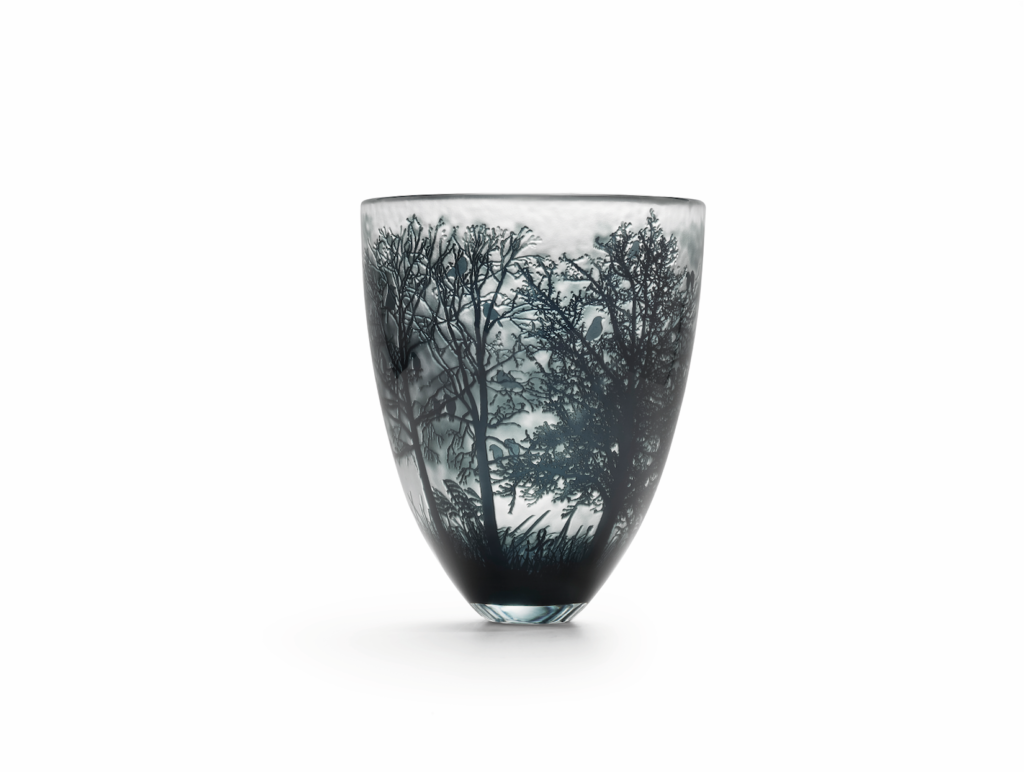
The Four Seasons Winter Vase. Image courtesy Asprey.
Another example is our work with the Prince’s Trust organization and the Turquoise Mountain Foundation nonprofit in Afghanistan. They want to help communities around the world become economically viable, while also preserving their artistic skills. They’ve introduced us to a workshop in Kabul, in the war zone, where artisans make the most incredible lapis lazuli objects. Lapis comes from Afghanistan originally, and therefore the best lapis and the best lapis craftsmen come from there, too. They were a small workshop operating at the local level when we began working with them and, after two years of partnerships, we were able to help their craftsmen really hone their skills to meet the Asprey level of luxury. They worked really hard, and now they’re delivering lapis boxes decorated with indigenous stones from Afghanistan that are incredibly beautiful and suitable for our brand. It looks like modern art, the way the stones are carved. So, in that case, we recognized potential and helped these craftsmen grow their skillset.
Earlier this fall, you began a new, ongoing collaboration with Simon de Pury, who is now curating exhibitions for your store on New Bond Street in London. How did that come to be?
The relationship with Simon de Pury started out on a social basis: I met him through friends. Then, at one point, one of those friends said to Simon, “You should see the space that Asprey has upstairs.” The building on New Bond Street is actually a combination of five former British townhouses in the middle of London, which is pretty amazing. They all still feel fairly distinct, and you notice that as that you’re walking from one building to the next, because the floors are all slightly different heights. In any case, on the second floor there are nine continuous rooms that are very large, with high ceilings and incredible light because of all the windows. And when Simon saw those rooms, he said, “My god, this is an incredible space to present art.”
Obviously, this idea was interesting to us, because it would help us showcase that we are a hotbed for creativity. We have several creative teams, including our workshops upstairs in that building that produce silver, leather, and jewelry. Simon said, “We could not only showcase incredible artists here, but elevate this in-house creative center that you have here, too.”
For him, I think it was interesting because he felt that you could present art and artistic objects—because we won’t show just paintings, but also sculpture, furniture, and other objets d’art—comfortably. You know, it’s not a traditional gallery, which is basically a white box, and not just a retail store, which is like a glass house of some kind, because all retail looks the same now. It’s a house. So the idea is that people will feel like they’re visiting someone’s home with those objects on the floor or art on the walls, and it’s a different way to showcase it all. That’s how we got started.
You’ve said the program is ongoing, but what does that mean? How often do you plan to stage exhibitions?
Our ambition is to have five or six major exhibitions a year.
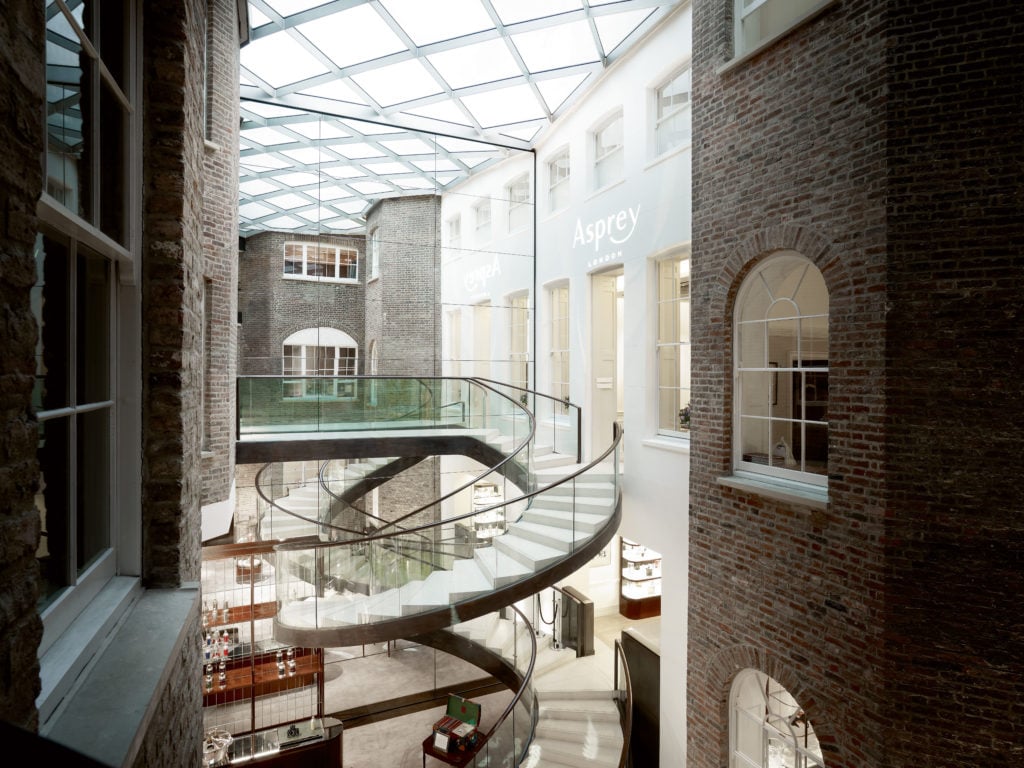
The atrium at Asprey New Bond Street. Photo courtesy Asprey.
Wow.
Yeah. The idea is to introduce new artists and showcase creativity, but also capture the zeitgeist, including the fact that London continues to be a center of artistic inspiration. So one of the future shows is going to be a group exhibition of British artists who have found their particular artistic self and calling in London. But we’ll also spotlight up-and-coming artists. We always want to have a combination of all these aspects, and make it super interesting for people to visit and discover something that’s not in a retail format or a gallery format, because galleries have become a little bit austere now, too, with the same look and feel.
Are you hoping that this program becomes recognized by the artist community as a place to exhibit?
In a sense, yes. Simon’s objective is to establish “de Pury at Asprey” as a well-respected platform for the artists we represent.
It’s interesting that a lot of luxury brands feel the need to build out their store presence these days with experiences and programming that are decidedly not retail- or product-driven. What are you hoping to gain from this year-round arts programming?
During times when there’s a lot of money going into art—this is one of those times, and there have been other periods in history—the pendulum swings and artists have a lot of resources to work with. They’re open to doing more projects, and they’re trying to introduce new media into their oeuvre. Artists had a lot of resources in the Golden Age in Holland, and they had a lot of resources in Venice, and in Byzantium for religious art. They expanded. Because you have a lot of money going into art right now, all the luxury brands are trying to capture this generation of art-buyers through the blending of luxury products with an artistic dimension and actual art. And that’s because art is where the money is.
Some of these collaborations can be very superficial: you create a product and then just stamp it with an artist’s signature—what’s the big deal? But some of it can be more substantive and in-depth and actually congruous with the values of the artist. I’m more interested in that part, because that’s more genuine. Now, if we can also make that into an opportunity to produce a great luxury product that truly sits between art and design, then it’s an incredible win, because it’s not just an artistic product but an artistic luxury product. And the four seasons vase I told you about before is a perfect example of that. It’s truly rare.
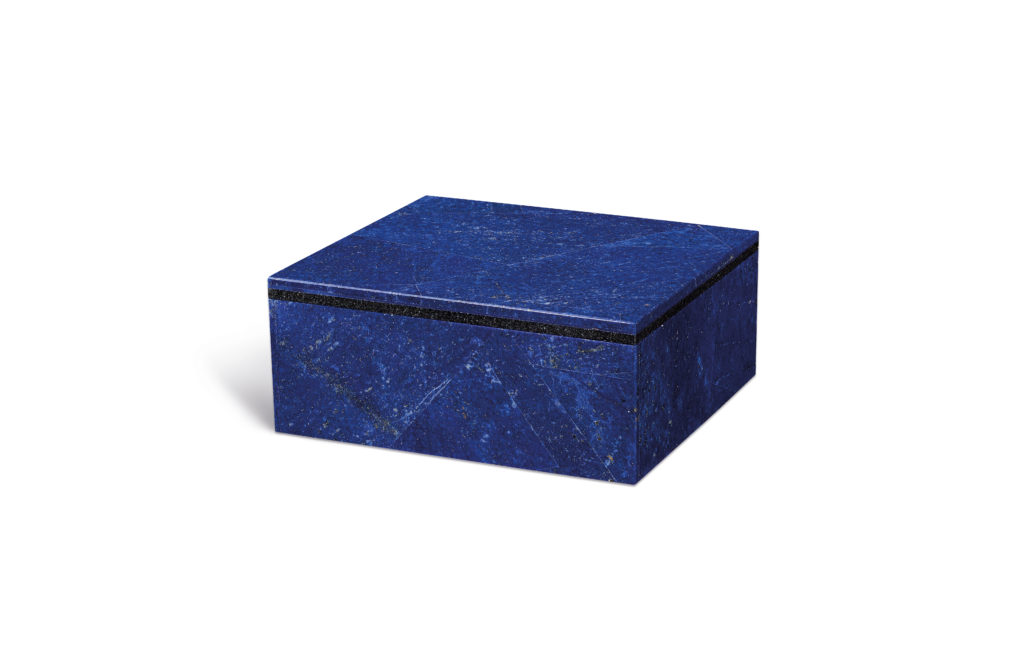
A lapis lazuli semi-precious stone box made in Afghanistan for Asprey. Image courtesy Asprey.
People engage with art in different ways. How do you engage with a work when you come across it? What do you look for when you come into contact with something that interests you?
If we’re talking about paintings, the first impression is always important because it goes through your mind and your heart in a flash. I remember the first time I was a student and went to Tate Modern, and they had the first or second retrospective of Francis Bacon. When I walked in, I didn’t know Francis Bacon—I was maybe 19 years old—but I immediately knew his work was great art. So the first feeling has a huge impact on me. Afterwards, it sort of slows down, and what I like to do is discover things in great detail over time. You can look at a painting for years and still discover, in new ways, how the light was created by the stroke of the brush and so on. That’s hugely rewarding because you continue to learn from it. If it’s sculpture, then it’s usually about the shape—and if the artist is a master of shaping, the way you relate to it is not so much intellectually as physically, to feel it out. It’s visceral. So, you know, I love art.
What do you consider to be great art?
My personal preferences are for the Impressionists, the early Abstract Expressionists, and some of the Surrealists. So if you ask me what I like about 20th-century art, that’s what I like. I’m also very particular about artists that express emotion in a very personal way. I don’t like the people who say, “Let’s take the emotion out of it.” That’s not my thing. I also like beautiful art. In fact, I don’t really like art if it’s not beautiful. I guess I’m just very traditional in that sense.
These days, a lot of attention is paid to market phenomenons like KAWS and Jeff Koons, who create objects that sit just inside the line between art and design. Do you give any thought to them?
Every historical period has its artists. As time passes, they’re judged by history and time, and some of them fall away, because they’re discovered to be just popular artists expressing the popular preferences of their time. And then some of them are considered to be great artists because at the end of the day, they express the universal truths of humanity in the context of their time. There’s a fundamental difference between the two categories, and you have it everywhere from literature to theater to art. It’s very difficult for us to say who is going to be the great artist of 2019 in a hundred years from now. Time will decide which artists expressed those truths in the context of their period, and which ones were just making plastic toys.
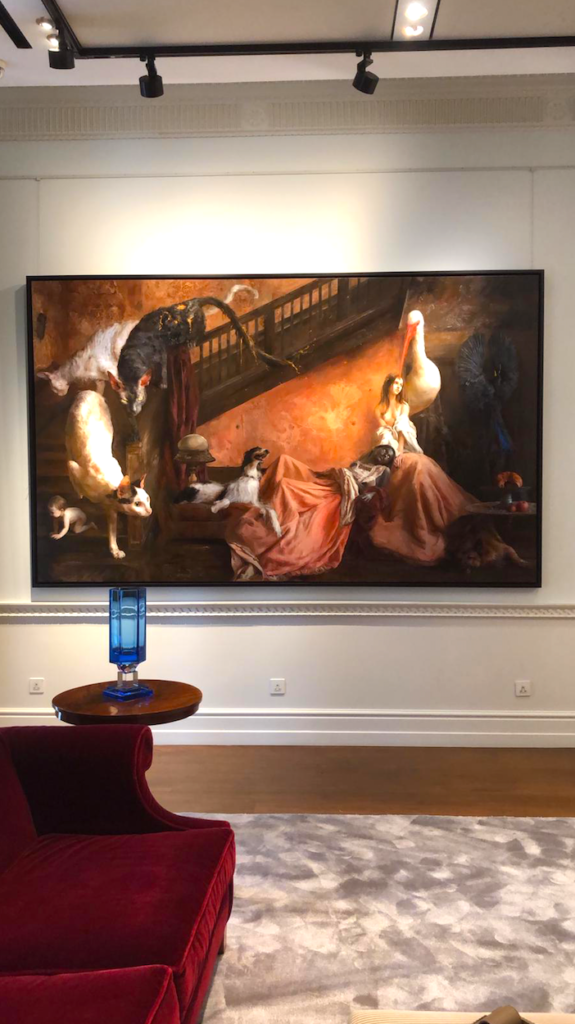
An interior view of Asprey’s New Bond Street store featuring a work by Guillermo Lorca. Photo courtesy Asprey.
One of the most dynamic areas in art today is the reconsideration and embrace of the art of cultures that were once subordinated under colonial rule, and of people who were marginalized for their color, gender, or ethnicity. What do you make of the way that the art establishment is tackling this moment, for instance in MoMA’s recent reorganization of its collection?
I think now we realize that the European and North American histories are not the only ones that exist, and people are trying to be more all-encompassing, which is correct. If you are an institution at the level of the Met or MoMA, I think you have a responsibility to show all aspects of art history—you are a global institution, you are competing to educate and inform people on a global level. That’s a different ballgame. I think nowadays, with social media and all that, we realize that there are schools of art developing in different parts of the world that we would never have the ability to see without the internet. Online, they have a much bigger possibility of being discovered and then being brought to New York.
That’s the story with Guillermo Lorca, the first artist that we exhibited under the de Pury collaboration. He only does six or seven paintings a year, and he puts a tremendous amount of effort into those paintings—always searching for that extra something to fully express what he’s feeling. That’s true art. He’s very well known in his home country of Chile but not well known internationally, and that’s part of what we want to do: introduce new ideas and new cultures, not just the ones that everybody knows.
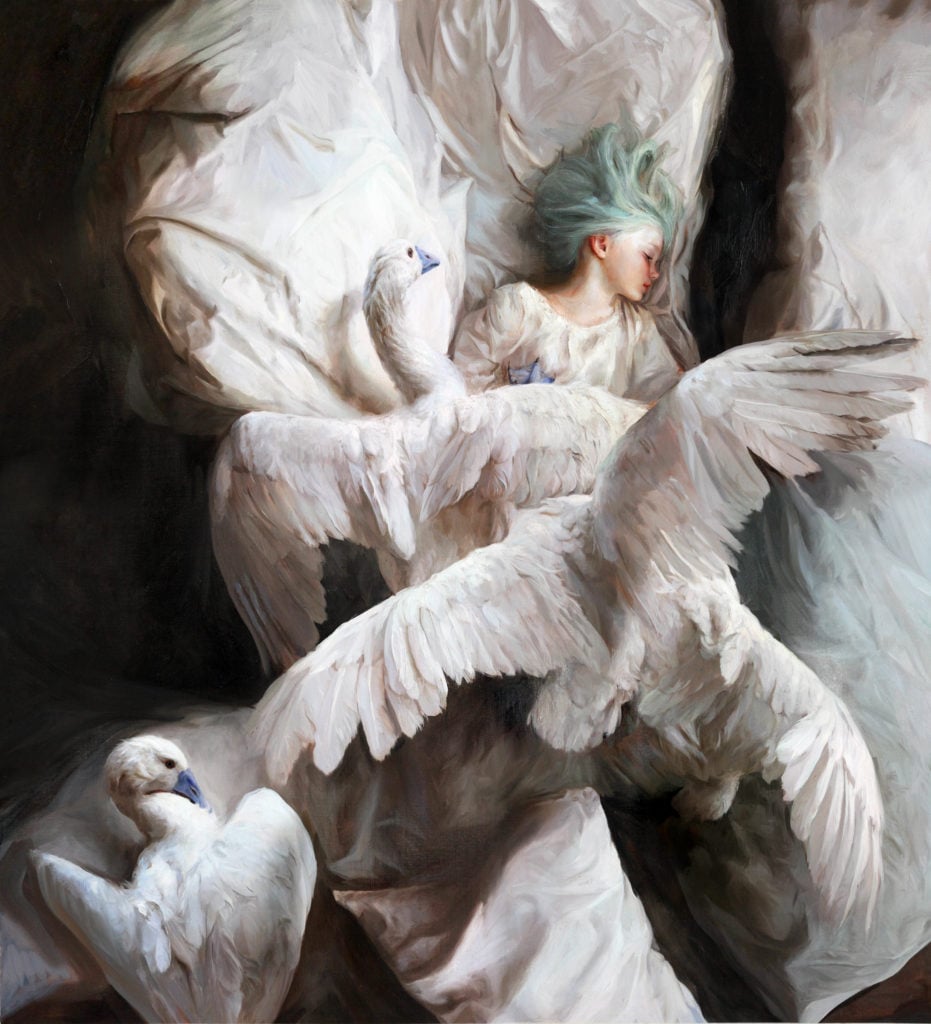
Guillermo Lorca, The Landing (2019). Image courtesy the artist and Asprey.
What was the response from people who came to see your first art show, with Lorca?
Interestingly, nobody asked, “Why Asprey? Why here?” People felt that it was completely natural, which was very rewarding because it shows that they recognize that we are a center for creativity. We had a lot of creative people who said, “I didn’t realize you do this. Let’s do something together.”
So, given what you said about the sameness of so many retail locations, and your pride in breaking out of that box at Asprey, what do you think the future of brick-and-mortar looks like?
Once upon a time, when retail stores were based on specific, individual craftsmen, you used to go to their shops to buy whatever it was they made. Fast forward 2,000 years to the present day, when the big luxury brands have created international networks where they’re expanding their retail network on the basis of saturation. It’s a little bit like Starbucks, who want to be on every corner and in every building to make sure they get your business. I think, at Asprey, we were at that point about a decade ago, when we had our maximum network size—the thinking was, “Let’s be everywhere, let’s have a lot of retail, let’s be in the airports, let’s be in the shopping galleries, and on the big streets in every city, like Madison Avenue and Bond Street.” We wanted to capture the clients wherever they were.
I think now this approach is in decline, and as young people enter into the buying periods of their lives, they want to buy on the internet and on their mobiles, so you don’t really need as many stores. They don’t really want to go anywhere to discover products they can easily discover on their phones. So the reality is that, if anything, the trend is for a reduction of store networks, and not only that, but the stores that you have have to be meaningful for people to visit. It cannot be just a store. So we’re going back, full circle—for different reasons—to the original, singular destination. That, in a sense, is what we are trying to offer at Asprey.